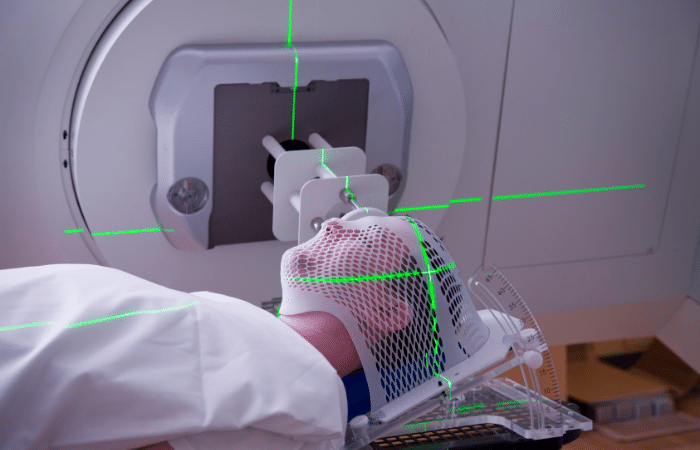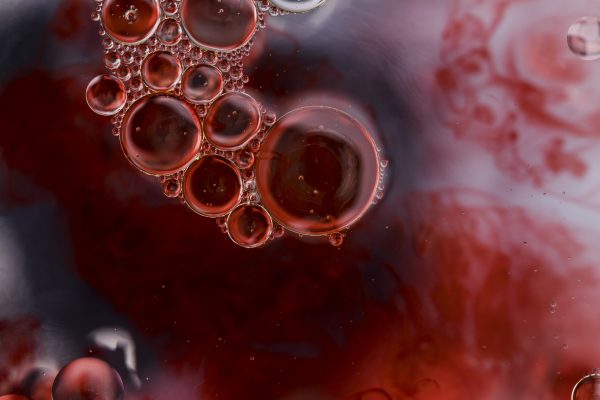Affordable Lymphoma Treatment In India
CancerFax is here to guide you on best hospitals for lymphoma treatment in India that won’t cause a burden on your budget.
Non-Hodgkin lymphoma (NHL) is a common type of hematological cancer affecting the lymphatic system. The age-adjusted incidence rates of NHL in men and women in India are 2.9/100,000 and 1.5/100,000, respectively. Hematologists now uses latest drugs and immunotherapy for lymphoma treatment in India.
A lymphoma diagnosis can be stressful, with numerous questions and worries about treatment, especially regarding the expenses. In our country, where millions are fighting this blood cancer, understanding lymphoma treatment cost in India becomes essential.
Lymphoma affects the lymphatic system, which is a network of veins and tissues that plays a vital role in immunity. Unfortunately, India has faced a high lymphoma rate in the last few years that affects people of all ages and groups.
While timely diagnosis and treatment are key to managing the disease effectively, the cost of care can sometimes raise serious anxieties. Lymphoma patients can also undergo CAR T Cell Therapy which is also beneficial in multiple myeloma treatment in India. The cost of CAR T cell therapy in India is much more affordable than in other Asian countries.
Moreover, people diagnosed with Hodgkin Lymphoma have a blood cancer treatment success rate of 80%
What is lymphoma?
Lymphoma is a type of blood cancer that targets the lymphatic system—our body’s defense network. This complicated system includes lymph nodes, the thymus gland, the spleen, and the liver. This network produces B-cells and T-cell lymphocytes, which serve as our immune system’s warriors.
These cells, like blood vessels, are distributed throughout the body to protect against infections and viruses. However, when someone has lymphoma, these cells multiply abnormally and accumulate in specific locations, such as the lymph nodes.
Lymphomas are classified as blood cancers because they typically migrate between the lymphatic and circulatory systems to combat infections. Unfortunately, the weakened lymphocytes lose their infection-fighting abilities, making the individual more vulnerable to infection.
How Many Type Of Lymphoma Are There?
Lymphoma is classified into two types:
Hodgkin Lymphoma
Hodgkin Lymphoma is identified by the presence of Reed-Sternberg cells in lymph nodes. It typically forms in lymph nodes in the neck, chest, or abdomen. It can occur at any age, but is most common in young adults and older adults.
Non-Hodgkin Lymphoma
Non-Hodgkin Lymphoma is more common than Hodgkin Lymphoma and constitutes a diverse array of lymphomas. It can affect lymph nodes throughout the body, as well as other organs like the spleen, bone marrow, and liver.
Why Do People Fly To India For Lymphoma Treatment?

Experienced Oncologists:
India has a group of exceptionally skilled oncologists who treat lymphoma cancer, ensuring patients receive expert care.
Modern Facilities:
Top hospitals and clinics in India are equipped with the best facilities and advanced medical technologies which enables accurate diagnosis and effective treatment.

Affordable Treatment Costs:
When compared to many other nations, India’s healthcare facilities offer a substantial lymphoma treatment cost India at a significantly lower cost.
No Waiting Lists:
Unlike countries with lengthy waiting lists for cancer treatments, India ensures quick medical attention, allowing patients to initiate their treatment without delays.

Holistic Healing Approach:
Indian doctors treat patients with a holistic approach, focusing on their mental and emotional wellness in addition to their physical health.
Language Accessibility:
Due to the widespread use of English in India, international patients and medical staff can communicate easily, which makes the treatment much easier.
Types Of Lymphoma Treatment In India
Treatment options for lymphoma vary in India based on the patient’s overall health, stage of the disease, and precise diagnosis.
Chemotherapy
Chemotherapy is still the primary treatment for many types of lymphoma, and it involves the use of a combination of potent medications to kill cancer cells.
Radiation Therapy
Radiation treatment is the use of high-energy beams to target specific locations containing cancer cells. It is frequently used alone or in conjunction with chemotherapy.
Stem Cell Transplantation
This procedure replaces damaged bone marrow with healthy stem cells and is commonly used for aggressive lymphomas or following high-dose chemotherapy.
CAR T-Cell Therapy
This revolutionary treatment genetically modifies a patient's T cells to recognize and target cancer cells, offering hope for certain, and aggressive lymphomas.
Targeted Therapy
Target specific genetic or molecular changes in cancer cells to prevent their development and progression of cancer cells.
Lymphoma Surgery
Surgical procedures may be considered to remove lymph nodes or tumors that have an impact on general health.
Lymphoma Treatment Cost In India Based On Various Therapies
India’s healthcare sector provides affordable lymphoma treatment options while maintaining a commitment to excellent care. Let’s look at the affordability of several treatment options:
Chemotherapy:
The cost of chemotherapy for lymphoma in India is between INR 50,000 and INR 1,50,000 ($680 and $2,040) per cycle. Chemotherapy cost vary by city and healthcare facility and are determined by criteria like medicine selection, cycle frequency, and patient health.
Radiation Therapy:
When combined with chemotherapy, radiation therapy enhances treatment outcomes. In India, the cost varies from INR 1,50,000 to INR 5,00,000 ($2,040 to $6,800) for a complete course. The lymphoma treatment cost in India is often influenced by radiation type, number of treatments required, and cancer location.
Immunotherapy:
Immunotherapy expenses in India range from INR 2,00,000 to INR 10,00,000 ($2,720 to $13,600) per cycle, revolutionizing cancer treatment. Variations in this lymphoma treatment cost in India are explained by the particular immunotherapeutic agent used and the length of the treatment.
Targeted Therapy:
Targeted therapy prices in India vary from INR 5,00,000 to INR 20,00,000 ($6,800 to $27,200) each cycle, with promising outcomes for specific lymphoma subtypes. The medications taken during the therapy and the length of treatment mainly determine costs.
Stem Cell Transplant:
Stem cell transplants in India cost between INR 10,00,000 and INR 25,00,000 ($13,600 to $34,000) and represent a potential cure. Variations in the treatment cost occur due to factors such as transplant type, stem cell source, and general patient health.
Factors Affecting Lymphoma Treatment Cost In India
Lymphoma Type And Stage:
Hodgkin lymphoma and non-Hodgkin lymphoma (NHL) have different treatment procedures, which affects costs. Disease stage (I-IV) influences complexity and cost.
Hospital Charges:
The choice of hospital and its location have a considerable impact on cost. Larger, metropolitan hospitals with superior facilities frequently demand greater service fees.
Doctor’s Fees:
The experience and reputation of the treating oncologist influence costs. Highly skilled and renowned oncologists may charge higher consultation and treatment fees. However, their expertise and knowledge often result in positive outcomes.
Diagnostic Tests:
Diagnostic treatments like biopsies, CT scans, PET scans, and blood tests add to the overall cost of treatment. The frequency and type of tests required have an overall impact on costs.
Medications:
The cost of medications, including chemotherapy drugs, immunosuppressants, and supportive medications, can constitute a significant portion of the overall treatment cost.
Duration Of Treatment:
The length of the treatment plan, which varies depending on the stage and response to therapy, influences the overall cost. Longer periods frequently result in higher costs.
Patients’ Overall Health:
The patient’s overall health status and ability to tolerate treatment can influence the treatment approach. Some patients may require additional supportive care, resulting in higher overall expenses.
Post-treatment Follow-Up:
The expenditure does not end with the completion of basic treatment. Regular follow-up visits and surveillance scans are required to monitor the patient’s progress and detect potential relapses, which adds to the total cost.
Top Cancer Hospitals Offering Affordable Lymphoma Treatment Cost In India
Lymphoma Treatment Cost In India Based On The Diagnostic Tests
Lymphoma is diagnosed via a series of diagnostic tests, each of which contributes to an understanding of the disease’s kind, stage, and extent. The cost of various diagnostic tests for lymphoma therapy in India varies depending on the type and number of tests required.
Blood Test (Complete Blood Count – CBC):
A CBC is a basic test that determines the number and quality of white blood cells, platelets, and red blood cells in the blood. It can identify infection, inflammation, anemia, and bleeding disorders. The cost of a CBC in India normally ranges between Rs. 300 and Rs. 500.
Lymph Node Biopsy:
This medical procedure involves extracting a tiny tissue sample from a lymph node and examining it under a microscope for signs of cancer. A lymph node biopsy is required to confirm the lymphoma diagnosis and identify the precise type and subtype. The cost of a lymph node biopsy in India might range from Rs. 3000 to Rs. 7000.
Bone Marrow Tests:
A bone marrow test includes removing a small sample of bone marrow, the soft tissue found inside the bones, and evaluating it for signs of cancer or other disorders. This test determines whether the lymphoma has gone to the bone marrow and altered its function. It normally costs between Rs. 5000 and Rs. 10,000.
CT Scan (Computed Tomography):
A CT scan is an imaging test that uses X-rays to create detailed pictures of the inside of the body. It helps detect enlarged lymph nodes or organs, tumors, or other abnormalities in the chest, abdomen, or pelvis. The cost of a CT scan in India varies and is generally in the range of Rs. 5000 to Rs. 15000.
PET Scan (Positron Emission Tomography):
A PET scan is a diagnostic test that uses a radioactive tracer to indicate how cells and tissues function in the body. It can measure lymphoma cell activity and evaluate whether or not they are responding to therapy. A PET scan might cost anywhere between Rs. 15000 and Rs. 25000.
FAQs On Lymphoma Treatment Cost In India
What is the average cost of lymphoma treatment in India?
The average cost of lymphoma treatment in India ranges from ₹12,80,000 – ₹17,60,000 ($16,000 – $22,000)
How much is Hodgkin’s lymphoma treatment cost in India?
The cost of Hodgkin’s lymphoma therapy in India varies depending on the type and stage and can range from low to high.
How much is Non-Hodgkin’s lymphoma treatment cost in India?
Non-Hodgkin’s lymphoma treatment cost in India ranges as per the treatment. Chemotherapy requires INR 100,000, while radiation requires INR 125,000 for one cycle.
Can lymphoma be 100% cured?
Lymphoma can achieve high cure rates, but a 100% cure is not guaranteed and depends on various factors.
How long will I live if I have lymphoma?
Lymphoma prognosis varies; survival rates are influenced by the type, stage, and response to treatment.
How much does chemo cost for lymphoma?
The cost of chemotherapy for a single cycle is approximately Rs 15000. However, it depends on the stage and brand of chemo used, which varies a lot.
